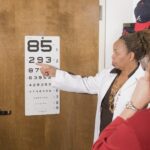An urgent care clinic can often treat a minor cut or mild illness. These facilities are like walk-in clinics and usually don’t require a doctor’s appointment. However, they do not treat life-threatening conditions. If you have an ongoing need, it’s best to visit your physician, who can address it over time.
Staff
Most urgent care centers are staffed by nurses, physician assistants and nurse practitioners. They are supervised by board-certified physicians who visit the facilities to examine patients with more serious symptoms, like chest pain. Numerous medical conditions and traumas, including small cuts, fractures, stomach discomfort, and allergic reactions, are treated by professionals at urgent care facilities. They are also usually knowledgeable about your health insurance plan and how to process your payment. The staff at urgent care clinics can help you with any paperwork you may have to fill out on-site, such as patient information, emergency contact information, HIPAA and consent forms. You can cut down on the time you spend in the office by gathering all of this information and even pre-filling some of these forms online if the urgent care center allows it. It will save you valuable minutes that you can use to spend with the doctor and nurses.
Wait Time
Many urgent care clinics are walk-in facilities, meaning you don’t need an appointment to see a healthcare professional. But that means your wait time can vary. It all depends on how many people are ahead of you and the severity of their illness or injury. Some offer urgent care online check in, allowing you to provide initial information and reserve your spot in line. It can significantly reduce the wait time once you arrive, so you can get the treatment you need much sooner.
Other factors influencing wait times include the complexity of cases, the availability of staff and resources, and the time of day. For example, the wait for services may be longer in the early morning or after work, as well as at night, when many primary care offices are closed. A clinic with a clear cancellation policy and making it easy for patients to check in online before arriving can also improve efficiency and reduce wait time.
Doctors
The doctors at urgent care facilities treat patients with various medical concerns. These include things like a bad flu, a sprained ankle, or a cut that needs stitches — symptoms that aren’t life-threatening enough for the emergency room and don’t warrant a visit to your doctor’s office. Physicians at urgent care clinics can send off lab work and perform basic tests on the spot, such as blood and urine. Then, they will diagnose your problem and provide treatment options. They also recommend seeing a specialist to ensure your condition doesn’t worsen. Because urgent care is convenient, it can be crowded, especially first thing in the morning and at dinnertime; when people visit before or after work or school, their regular doctors’ offices are closed.
Locations
In the last few years, urgent care locations (also known as immediate care centers) have become one of the most popular ways for people to get medical attention. They’re convenient, widely available, and usually less expensive than a trip to the emergency room. Often, urgent care clinics can take care of common health concerns, such as minor injuries or illnesses like the flu, and provide services like physical exams, X-rays, and cast removal. Some also offer specialized care, such as pediatrics or women’s health. When choosing an urgent care location, select one that is in-network with your healthcare plan to reduce out-of-pocket costs. Additionally, many urgent care centers allow you to call ahead and reserve a time to decrease wait times. Having your medical documents and information handy will also expedite the process.




